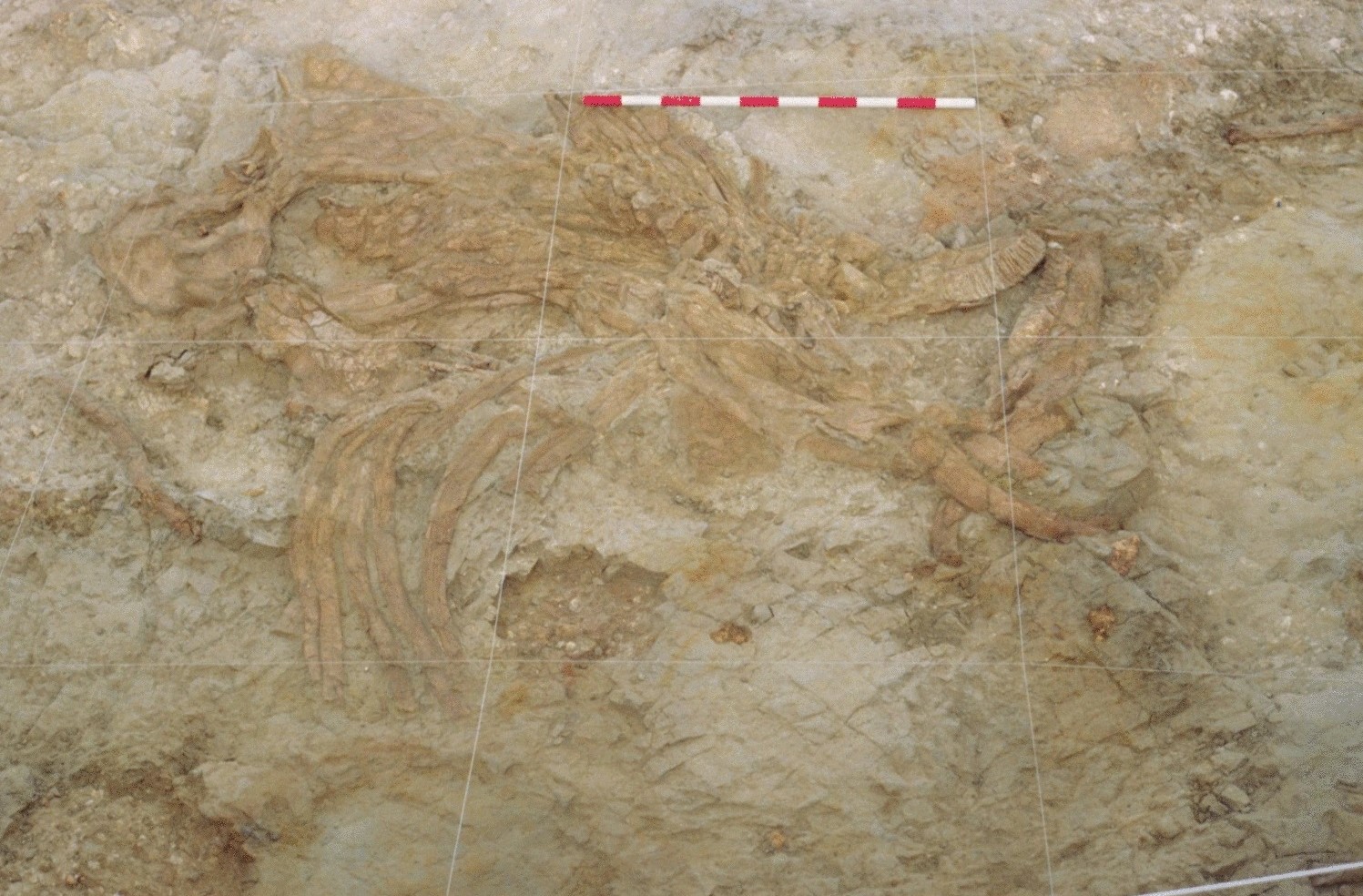The date: 1.4 million years ago. The place: a large basin surrounded by mountains in southern Spain. An unsuspecting mammoth walks slowly over the land. Four meters (13 feet) tall and 11 tonnes heavy, she doesn’t worry too much about predators. That is, until her feet start sinking in the ground. Her huge mass compared to small foot surface is working against her as she sinks deeper into the unexpected quicksand. Unable to escape, she becomes easy prey. Ready to attack are two unlikely commensals: giant hyenas and humans.
This is the story told by the findings at the latest archaeological dig near Orce, on the edge of the Guadix-Baza Depression. This site is rich in fossilized remains of human and animal activity from the Pleistocene. It is the site where, to this date, the oldest hominin fossil in Western Europe has been found. It’s a tooth and it’s 1 million years old.
It is also where archaeologists have uncovered the remains of many large herbivores along with mammoths: giant hippos (Hippopotamus antiquus), giant deer (Praemegaceros cf. verticornis), giant two-horned rhinos (Stephanorhinus hundsheimensis) – you get the picture. That’s how it got the ominous nickname “elephant graveyard”.
On the bones of these giant herbivores there are marks left by the teeth of scavenging carnivores, and by the tools human ancestors used to reach the marrow inside. How humans got access to these large prey was still unclear.
A recent study reported an analysis of the composition of the rock layers in this site and found that the upper archaeological levels were composed of two thirds sand and one third clay.
“These fine sand sediments, deposited close to the paleolake that was in the region, would also contain slightly saline water, a mixture that explains that they could have worked as quicksand, where larger animals were trapped,” said Paul Palmqvist and María Patrocinio Espigares, the University of Málaga scientists leading the study, in a statement.

The fossil of a southern mammoth (Mammuthus meridionalis) was found surrounded by 34 hyena coprolites.
This study suggests opportunistic behavior on the part of both humans and hyenas, attacking the naturally trapped herbivores that they were otherwise unlikely to be able to hunt. The identity of the giant hyenas (Pachycrocuta brevirostris) that dined on the mammoth was given away by the excrement that they left at the site. In case you ever wondered, there is a name for fossilized poop, and it’s “coprolites”.
This study is published in the Journal of Iberian Geology.
Source Link: Even If You're A Mammoth, Quicksand Can Get You